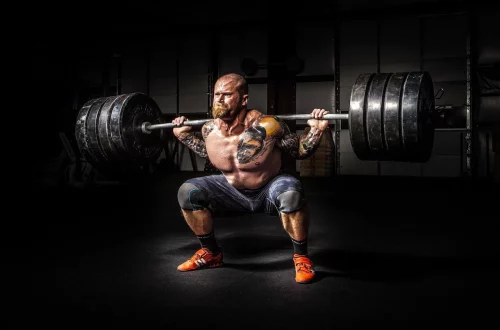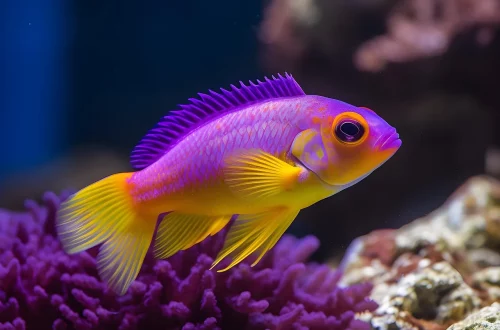
Can a Dog Get Parvo More Than Once? Understanding the Risks
Understanding canine parvovirus is crucial for dog owners. This highly contagious virus primarily affects puppies and unvaccinated dogs, causing severe gastrointestinal distress. Parvo can spread rapidly in environments where multiple dogs congregate, such as parks or kennels. The virus can survive in the environment for extended periods, making it a persistent threat.
Parvo is known for its ability to cause significant health issues, particularly in young puppies, who are more susceptible to its effects. Symptoms typically include vomiting, diarrhea, lethargy, and loss of appetite. The disease is often fatal without prompt medical intervention. Vaccination plays a vital role in preventing parvovirus, as it helps build immunity in dogs, significantly reducing the risk of infection.
Despite vaccination, the question arises: can a dog get parvo more than once? This concern can cause anxiety among dog owners, especially those with puppies or unvaccinated dogs. Understanding the nature of the virus, how it affects canines, and the importance of vaccination can alleviate some of these worries.
Understanding Canine Parvovirus
Canine parvovirus, often referred to as parvo, is a highly contagious virus that primarily affects dogs. It was first identified in the late 1970s and has since become a significant health concern for canines worldwide. The virus is particularly dangerous for puppies and unvaccinated dogs, as their immune systems are not fully developed, making them more vulnerable.
Parvo is transmitted through direct contact with an infected dog or indirectly through contaminated objects, such as food bowls, leashes, or even the shoes of humans who have been in contact with infected animals. The virus can survive in the environment for months, making it easy to spread, especially in places where dogs gather.
Once a dog is infected, the virus attacks the rapidly dividing cells in the intestinal lining, leading to severe gastrointestinal symptoms. Affected dogs often experience vomiting and bloody diarrhea, which can quickly lead to dehydration and shock. The severity of the disease can vary based on several factors, including the dog’s age, health status, and the strain of the virus.
Vaccination is the most effective way to protect dogs from parvovirus. The core vaccine series for puppies typically begins at six to eight weeks of age, with boosters given every three to four weeks until the puppy is around 16 weeks old. Adult dogs should receive regular boosters to maintain immunity. However, it’s essential to understand that while vaccinations greatly reduce the risk of infection, they do not guarantee complete immunity.
The Immune Response to Parvovirus
When a dog is vaccinated against parvovirus, its immune system develops a response that helps recognize and fight the virus if it encounters it in the future. The vaccine contains a modified form of the virus, which stimulates the immune system to produce antibodies. These antibodies are crucial in fighting off infections and preventing the disease.
However, the immune response can vary from dog to dog. Factors such as age, underlying health conditions, and genetics can influence how effectively a dog’s body can respond to the vaccine. In some cases, a vaccinated dog may still contract parvo, although the symptoms may be milder compared to an unvaccinated dog. This phenomenon can lead to the misconception that vaccinated dogs cannot get parvo at all.
Additionally, there are different strains of parvovirus, and some vaccines may not provide protection against all variants. This variability in the virus can pose a risk, particularly in areas where multiple strains are present. It is essential for dog owners to stay informed about local outbreaks and consult their veterinarians regarding appropriate vaccination schedules for their pets.
In rare instances, some dogs may experience a condition known as vaccine-induced immunosuppression, where their immune response is compromised temporarily. This situation can occur shortly after vaccination, making the dog more susceptible to infections, including parvovirus. It is a reminder that while vaccination is crucial, it is not infallible, and vigilance is necessary.
Can Dogs Get Parvo More Than Once?
The question of whether a dog can get parvo more than once is complex. In general, if a dog has been vaccinated and has developed immunity, the likelihood of contracting the virus again is significantly reduced. However, there are exceptions to this rule.
A dog that has recovered from parvovirus does develop some level of immunity, but this immunity may not be lifelong. Over time, the protection can diminish, especially if the dog is not kept up to date with vaccinations. Consequently, an unvaccinated or inadequately vaccinated dog could be at risk of re-infection if it is exposed to the virus again.
Moreover, individual health factors can play a role. Some dogs may have weakened immune systems due to other health conditions, making them more susceptible to infections, including parvovirus. Puppies that contract parvo before completing their vaccination series are also at risk, as their immune systems may not be fully equipped to handle the virus.
It’s worth noting that while rare, there have been cases of dogs contracting parvovirus more than once, particularly with different strains of the virus. This situation underscores the importance of maintaining a proper vaccination schedule and ensuring that dogs are kept away from potentially contaminated areas, especially during the critical early months of life.
Preventative Measures Against Parvovirus
Preventing parvovirus is primarily about responsible pet ownership and ensuring that dogs are vaccinated according to veterinary recommendations. Regular vaccinations are crucial for creating a protective barrier against the virus. Dog owners should consult with their veterinarians to establish an appropriate vaccination schedule tailored to their dog’s age, health status, and lifestyle.
In addition to vaccinations, maintaining good hygiene and cleanliness in the dog’s environment can help minimize the risk of infection. This includes regularly cleaning food and water bowls, toys, and bedding, as well as avoiding contact with stray dogs or areas where infected dogs may have been.
Socialization is essential for puppies, but it should be done carefully. Puppies should be exposed to various environments, people, and other dogs after they have received their initial vaccinations. Until then, it is advisable to limit their exposure to public places where the virus may be present.
Dog owners should also be vigilant for any signs of illness in their pets and consult with a veterinarian immediately if they suspect their dog may have contracted parvovirus. Early diagnosis and treatment can significantly improve the chances of recovery.
Lastly, it’s essential to spread awareness about parvovirus among the dog-owning community. Educating others about the risks and prevention strategies can help protect vulnerable dogs from this dangerous virus.
**Disclaimer: The information provided in this article is for informational purposes only and is not intended as medical advice. For any health concerns regarding your pet, please consult a veterinarian.**




